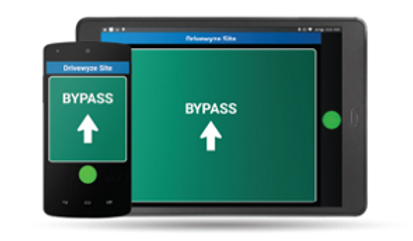
Safety scores are essential to every carrier’s operations. They communicate to law enforcement a fleet’s overall commitment to safety by combining relevant data, from crash reports to inspection results. They are also screened by transponder-less weigh station bypass technologies to determine if a truck should be pulled in for inspection. This often creates a misunderstanding about how a fleet’s Inspection Selection System (ISS) and Compliance, Safety, Accountability (CSA) scores affect their eligibility for bypasses.
What’s the Difference Between a CSA & ISS Score?
Before examining how safety scores impact a carrier’s ability to receive more weigh station bypasses, it’s critical to understand the distinction between CSA and ISS scores. Although similar, CSA and ISS scores have discreet differences that come into play during a truck’s route.
● The CSA score is a collection of safety data aggregated by the Federal Motor Carrier Safety Association (FMCSA). This data includes roadside inspections, crash reports, investigation results, and registration details from the last 24 months. The CSA program is designed to hold carriers and drivers accountable by docking their score with each violation. Fleets can find their CSA scores on the FMCSA’s Safety MeasureOment System (SMS).
● A fleet’s ISS score is an aggregation of its various CSA scores. Ranging from 1 to 99 (with a score of 100 being out of service), the FMCSA creates ISS scores to reflect a carrier’s overall safety profile. The lower the score, the better the safety rating. It is the ISS score that helps weigh station personnel determine if a truck requires an inspection.
To put these differences into perspective (side by side image comparison), think of CSA scores as the engine parts and the ISS score as the entire engine. When bypass technologies are screening vehicles for potential inspection, they’re looking at the ‘full engine.’
How Bypass Programs Use a Fleet’s ISS Score
Bypass programs only screen for ISS scores and not CSA scores as it is commonly believed. An ISS score offers law enforcement a comprehensive overview of a fleet’s safety profile, and it serves as a more efficient measurement tool.
Advanced bypass programs use modern technologies to screen for a vehicle’s ISS score, plus these other key inspection criteria:
● License and vehicle identification (VIN) number, which allows law enforcement agents to screen against registration, permits, and taxes.
● The weight of the vehicle, using embedded Weigh in Motion (WIM) scales to record the weight wirelessly.
● The Commercial Vehicle Safety Alliance (CVSA) sticker.
● Hazmat placards, if applicable to the truck’s load.
● In some states, the carrier’s International Registration Plan (IRP) and International Fuel Tax Agreement (IFTA).
Before the truck reaches the station, the bypass program scans for the vehicle’s US Department of Transportation (USDOT) number, which is used to locate the fleet’s ISS score in the federal system. The software then employs imaging, sensor information, and authoritative data sources to give law enforcement a detailed snapshot of that vehicle and its carrier. From there, the truck is either asked to pull into the scale house or granted a bypass.
Bypass services that offer 100% software-based technology, like Drivewyze PreClear®, allow drivers to receive bypasses directly on their in-cab ELD or mobile devices. This means that ISS scores and other inspection credentials can be read automatically at highway speeds, without having to slow down or switch lanes to drive under a transponder reader.
A great ISS score will typically result in more bypasses. Bypass services, like Drivewyze PreClear®, use the ISS score to determine the likelihood of performing an inspection. For instance, a truck with an outstanding score could receive bypasses up to 98% of the time.
Improving ISS & CSA Scores
It is important to understand that a poor ISS score does not mean that a fleet will never get bypasses. It may receive less, but once safety scores are improved, it will result in more bypasses.
There are several ways fleets can improve their scores for a more efficient operation. The most effective way for carriers to enhance their safety scores is to use weigh station inspections and highly reviewed bypass services to their advantage.
-
Ensure inspections are always excellent. Inspections impact both ISS and CSA scores, and clear inspections can improve them.
-
Encourage drivers to volunteer for inspections wherever schedules permit to have a record of violation-free results.
-
Get first-hand knowledge of the inspection criteria by speaking with law enforcement officers. Retired officer Doug Hatch says this is one of the best ways to learn how to improve a carrier’s safety scores.
-
Take steps to receive more bypasses by streamlining safety procedures and implementing a bypass service. Bypasses proves the fleet’s commitment to safety and therefore improves safety scores.
-
Invest in a bypass service that provides GPS-based business intelligence reporting to understand what criteria are reported during vehicle inspections. This will highlight the specific areas where safety measures can be improved across the fleet to upgrade safety scores and provide more bypass opportunities.
Enhance Safety Scores with a Bypass Service
There are many measures carriers can take to understand their safety scores and improve them. By investing in the bypass service with the broadest possible network, such as Drivewyze PreClear®, fleets can automatically increase the opportunity for a bypass, especially for carriers that serve multiple jurisdictions. The bypass service can then be used to analyze safety violations that are contributing to the fleet’s safety profile. As scores improve, it generates a snowball effect: fewer inspections, less time wasted, and happier, more efficient drivers.
Interested to see how your fleet can get more bypass green lights on their routes? Contact us to start a free trial and find out how you can improve your fleet’s ISS score with Drivewyze PreClear®.

